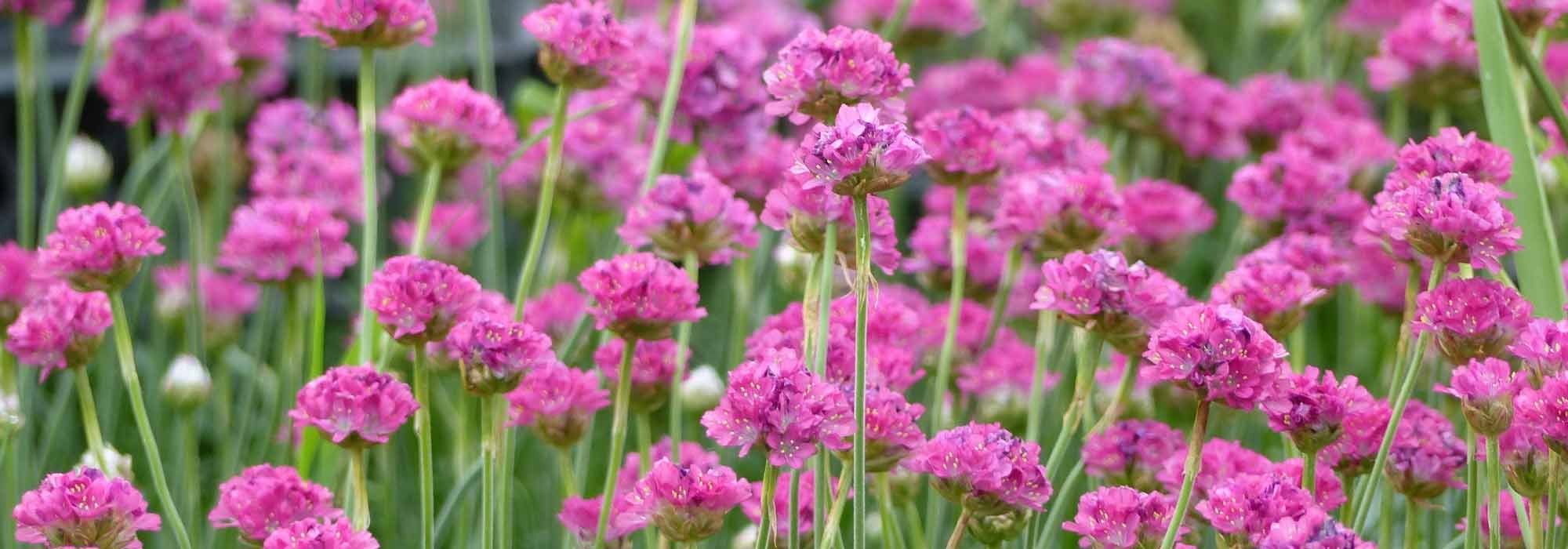
Armeria, sea thrift: planting, growing and care
Contents
Gazon d'Espagne: a few words
- Armeria is an essential groundcover plant for dry gardens, no-watering areas or rockeries
- It forms neat, rounded cushions, green or blue-green, which in spring are adorned with tight clusters of small flowers that emerge from the foliage
- In full sun, in well-drained soil, it establishes easily, requires no maintenance and will spare you the chore of weeding
- Hardy, resistant to drought and sea spray, this undemanding perennial is robust and unpretentious
- Use it to brighten a rockery, dress the edge of a path or add flowers to a container
A word from our expert
Sea thrift or Spanish thrift is a groundcover perennial plant that forms a pretty tapetum of flowers from May to late summer.
From spring, small, tightly packed pompom flowers emerge from a cushion of evergreen leaves green or blue-green.
From Armeria maritima ‘Alba’ or white Sea thrift to pink Sea thrift ‘Düsseldorfer Stolz’, all these Sea thrifts are both robust and hardy, establish easily, require no maintenance and avoid the chore of weeding: they are a worthwhile alternative to lawn.

Easy to grow, Armeria needs only sun and perfectly drained soil.
Good plant for dry or coastal gardens, needs no watering.
Plant in rockeries, in drifts along paths, in the toughest spots in the garden, on banks, to edge a bed of perennials, in pots, troughs and window boxes.
Discover our collection of Sea thrifts, these essential groundcovers with long flowering.
Description and botany
Botanical data
- Latin name Armeria
- Family Plumbaginaceae
- Common name Sea thrift, sea pink
- Flowering April–May to August
- Height 8 to 45 cm
- Exposure Sun
- Soil type All, well-drained
- Hardiness -15°C-20°C
Armeria, commonly called “Sea thrift” or “sea pink”, belongs to family Plumbaginaceae. Genus includes more than 80 species of perennial plants growing naturally in mountains and coastal areas of Northern Hemisphere.
Armeria maritima is the most common species in our gardens. Also encountered is Armeria juniperifolia, which offers a dwarf, compact habit not exceeding 8 cm in height, and especially Armeria pseudarmeria, which has given rise to a lovely selection, the ‘Ballerina’ series offering flowers larger than the species and exceptional floribundity and vigour.
Relatively fast-growing, this low plant forms a compact, dense herbaceous tuft, forming rounded small cushions, which, planted en masse, strongly evoke grass and earned it the nickname “Sea thrift”. This groundcover, which tends to spread over time without ever becoming invasive, will not exceed 8 to 45 cm in height in flower, with a similar spread. Armerias have good longevity.
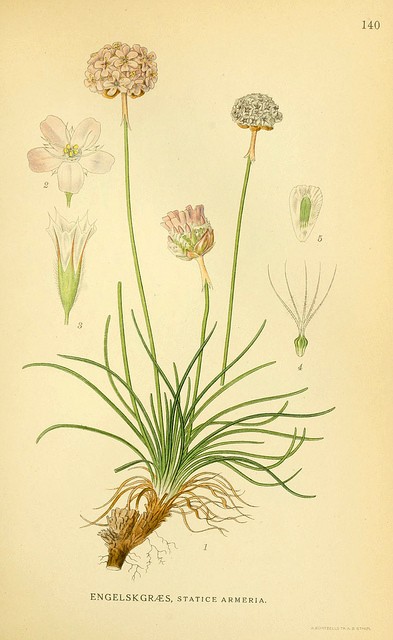
Armeria maritima – botanical illustration
From a cespitose, ramified stump, spring brings forth rosettes of evergreen linear or ribbon-like leaves, long lanceolate, 1–20 cm long. They display shades of medium green, dark green, blue-green, green-bronze, sometimes even purple, and their fine, narrow shape evokes grass foliage.
From this cushion, bright even in winter, rise rigid, smooth stems of varying length bearing at their tips the dense, spherical heads of the inflorescences. Perched on their stiff peduncles, usually well above the foliage, small flattened or cup-shaped flowers 1–4 cm in diameter appear in spring, closely packed into compact, globose pompons.
Flowers most often range through every shade of pink, from very bright pink to pure lilac mauve and red-pink, but are sometimes white in some varieties. Flowering, remarkably long, begins in April–May and does not finish until August, and is sometimes re-blooming in late summer.
Armeria is truly an easy little plant. From its mountainous origins it has retained an accommodating character and the robustness of plants that grow alone on dry banks. Very hardy (-15°C, sometimes well beyond), it can be grown in all regions.
It is a full-sun plant, that prefers poor, very well-drained soils, even sandy or slightly calcareous. Undemanding, it even tolerates sea spray, and withstands wind and drought perfectly.
While fully playing its role as groundcover, in rock garden or on borders, it can also be planted in alpine garden or in pots, tubs and window boxes.
Main species and varieties
While Armeria maritima is the most commonly cultivated species of Spanish grass, Armeria pseudarmeria and its Ballerina series cultivars, which produce larger flowers than the type and are more vigorous, are also frequently found in our gardens. The species Armeria juniperifolia is a very interesting dwarf, compact groundcover not exceeding 10 cm in height.
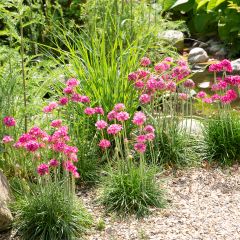
Armeria maritima Düsseldorfer Stolz - Sea Thrift
- Flowering time June to October
- Height at maturity 15 cm
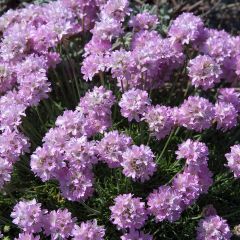
Armeria juniperifolia Bevans Variety - Sea Thrift
- Flowering time May to July
- Height at maturity 10 cm
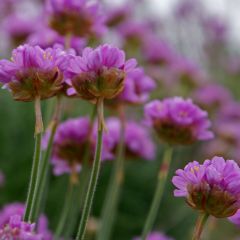
Armeria maritima splendens - Sea Thrift
- Flowering time June to August
- Height at maturity 10 cm
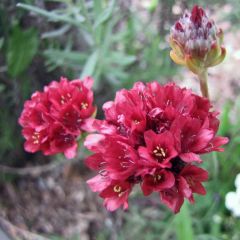
Armeria pseudarmeria Ballerina Red - Sea Thrift
- Flowering time June to October
- Height at maturity 20 cm
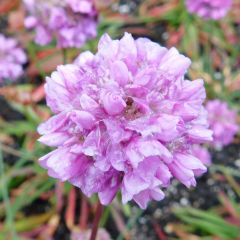
Armeria pseudarmeria Ballerina Lilac - Sea Thrift
- Flowering time June to October
- Height at maturity 20 cm
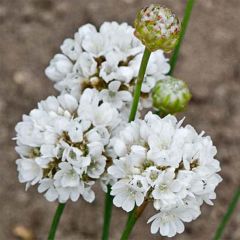
Armeria pseudarmeria Ballerina White - Sea Thrift
- Flowering time June to October
- Height at maturity 20 cm
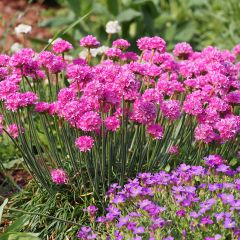
Armeria maritima Vesuvius - Sea Thrift
- Flowering time June to October
- Height at maturity 25 cm
Discover other Armeria - Sea Thrift
View all →Available in 0 sizes
Available in 2 sizes
Available in 2 sizes
Available in 0 sizes
Available in 1 sizes
Available in 2 sizes
Available in 1 sizes
Available in 1 sizes
Available in 1 sizes
Available in 1 sizes
Planting
Where to plant Armeria or Sea thrift
Very easy to cultivate, resistant both to cold (sometimes down to -20°C) and to drought, to wind or sea spray, Sea thrift can be planted anywhere in France. From its montane origins, it has retained an undemanding character and is able to grow on its own on seafronts and in holiday gardens without watering. Its good drought tolerance makes it a plant well suited to Mediterranean climate.
It prefers rather spartan growing conditions. It only needs very well-drained, dry, even poor soil, including calcareous soil. It will tolerate coastal sandy soils very well.
Winter flooding is fatal to it, excess water is its only enemy: it absolutely needs very free-draining soil, neither heavy nor waterlogged. If in doubt, plant on a mound or on a well-drained slope.
Give it an open area with no trees nearby that would shade it because it requires full sun to flower well.
This perfect groundcover will be an excellent plant alternative to lawn in sandy ground and in sunny, hard-to-reach areas of the garden, thus avoiding weeding.
It is rockery plant par excellence. It is also essential in the foreground of perennial beds and mixed borders with a wild look, where it brings a lot of lightness. Miniature species (Armeria juniperifolia) will be perfect per a trough or a pot.
It will establish along a path, a border or a fence, to flower on low walls, in paving joints, a rocky scree.
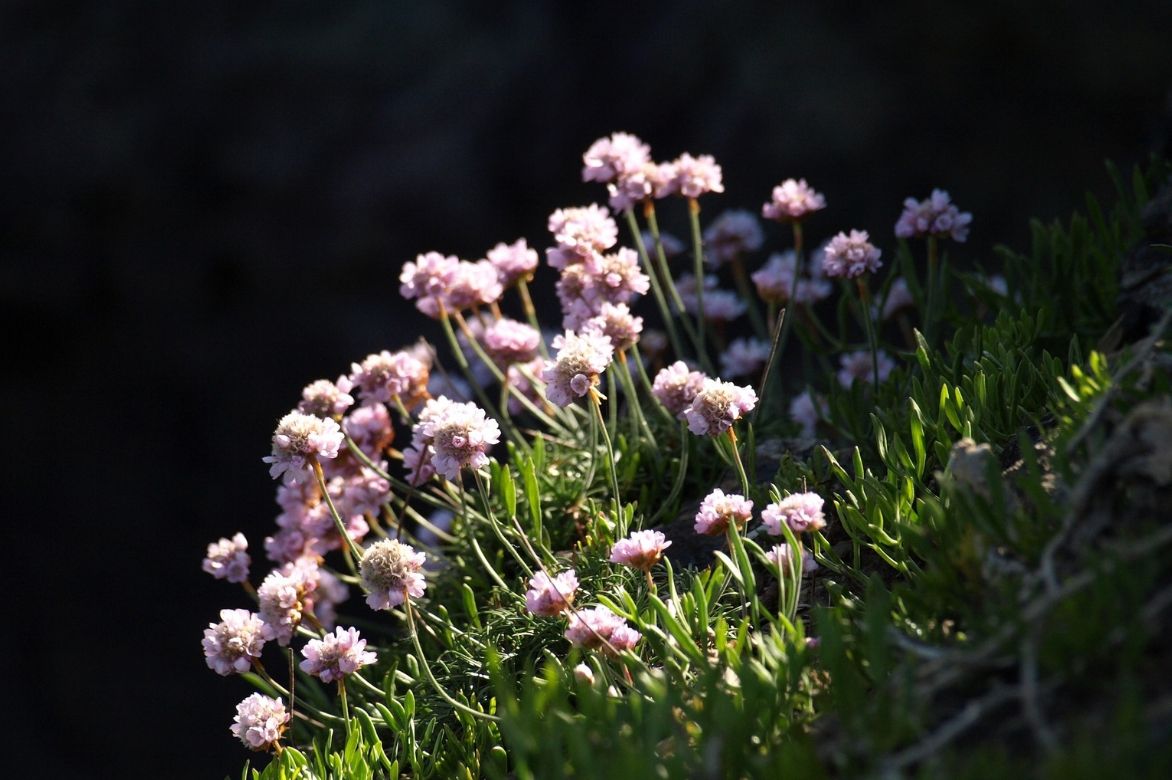
When to plant Armeria or Sea thrift
Plant Armeria or Sea thrift in the garden in spring, from March to May in cold climates when risk of frost has passed, or from September to November elsewhere.
How to plant Armeria or Sea thrift
In the ground
Armeria or Sea thrift is best planted in drifts of 9 to 10 plants per m2 spaced 20 to 30 cm apart for a beautiful homogeneous tapetum.
In heavy soils, add coarse sand or gravel at planting to improve drainage.
- Dig a hole three times wider than the rootball
- Plant without burying the collar
- Backfill with the excavated soil
- Firm gently
- Water generously at establishment; afterwards it will do without watering
In a pot
The Sea thrift does well in pots, planters or alpine troughs, alone or in combination. The growing medium must be very free-draining to avoid stagnant moisture at the roots. Place in full sun.
- At the bottom of a large pot 30 cm in diameter, spread a good layer of drainage (gravel or clay pebbles)
- Plant in a mix of potting compost, garden soil and gravel
- Protect from winter rains in bad weather by bringing into a greenhouse
- Mulch and water regularly
→ Find out more about the planting of Armeria maritima in a pot with Virginie
Care and maintenance
The Sea thrift is a truly undemanding perennial: it grows on its own without care and does not require watering once well established. Perfect for weekend gardens or gardens without regular gardeners!
It needs regular watering at the start of cultivation; afterwards, it will look after itself.
In a pot, water slightly more regularly to keep potting mix slightly moist, especially if drought sets in. Once a month, feed the plant with a fertiliser for flowering plants to encourage flowering and keep it vigorous; do the same when repotting. In colder months, although it is not bothered by cold or frost, you can protect it from icy rain by sheltering it in a greenhouse.
Deadhead faded flowers as they appear to encourage flowering and keep small cushions looking tidy.
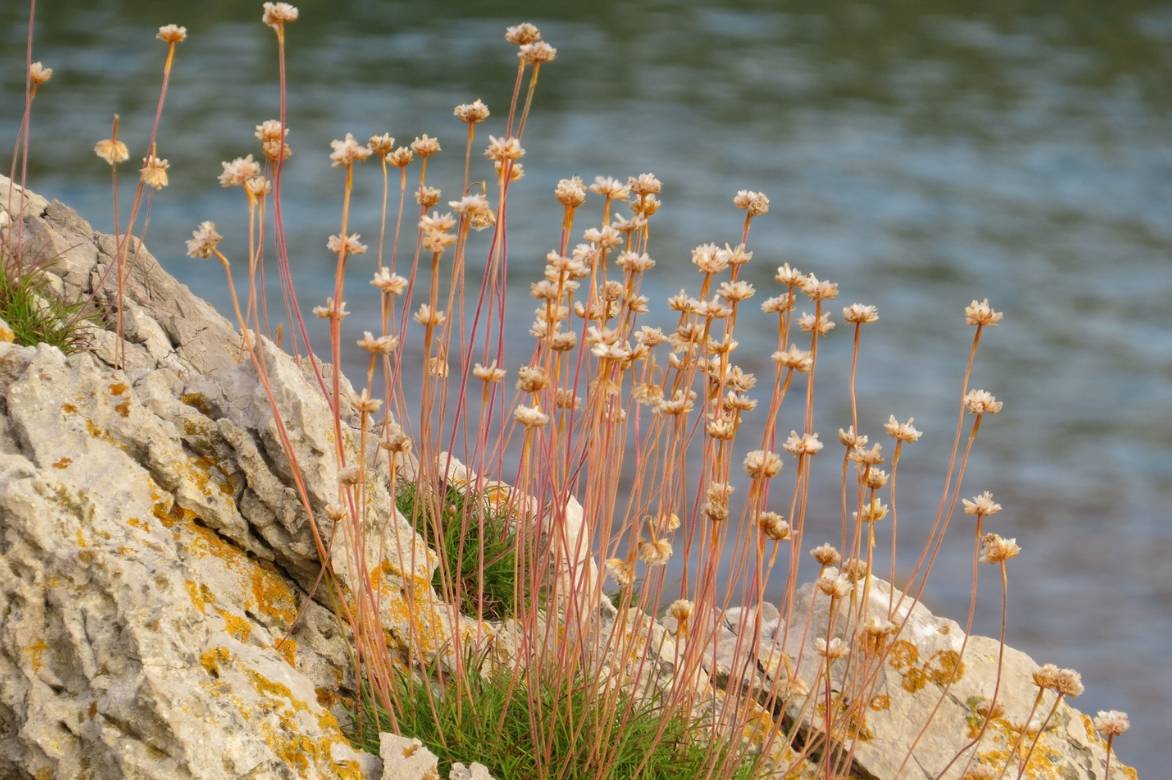
Withered clump of Armeria maritima (photo Gertjan van Noord-Flickr)
In autumn after flowering, tidy and cut back clumps to ground level to maintain a vigorous, compact tuft.
Every 2 or 3 years, divide clumps to restore vigour.
Potential diseases and pests
In open ground, Armeria or Sea Thrift is not very susceptible to disease. Rust is its main enemy, especially in spring when it produces rust-coloured pustules on the leaves. Remove and destroy affected leaves. Then treat this fungus by applying sprays of stinging nettle or horsetail manure.
Infestations of red spider mites and aphids can occur in greenhouses.
Multiplication
Division of clumps in spring, on well-established 2 to 3-year-old plants, remains the simplest and quickest method of propagating Sea thrift. Sowing Sea thrift seeds under a cold frame in spring or autumn is possible but results are variable.
- Use a spade to lift the clump
- Separate a few divisions from the clump
- Replant these divisions immediately in the garden in well-draining soil
- Water well
Associate
With excellent resistance to drought and sea spray, ornamental all year round, Sea thrift is indispensable in dry gardens, in a mineral garden and in low-maintenance holiday, seaside, alpine or Mediterranean gardens where it forms superb flowering tapeta all year round.
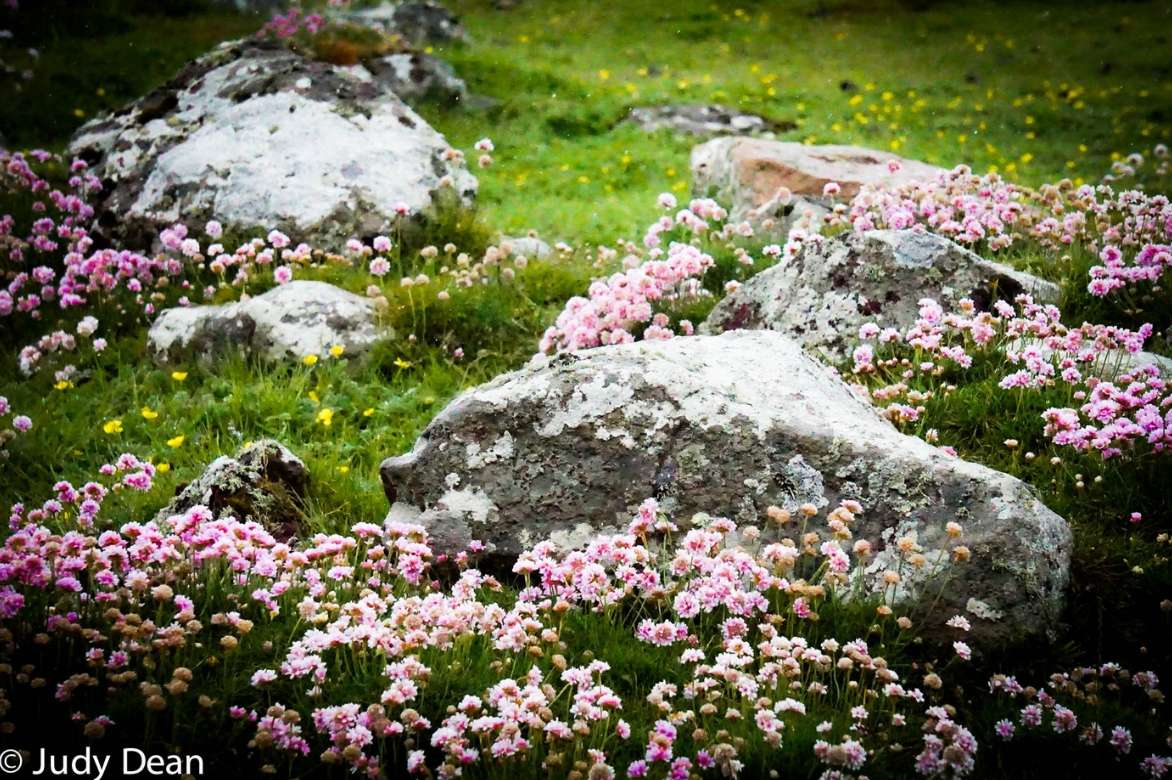
Planted en masse, it provides contrast with its vibrant shades, either in pastel mixes of cool mauve, purple or white tones or in more complementary pink/green-yellow combinations with Allium moly and Achillea.
Flowers of this perennial groundcover bloom abundantly in spring and summer, surrounded by other sun-loving groundcover perennials such as Arabis caucasica, aubrietas, Iberis, moss phlox, hardy geraniums, Cerastium tomentosum (silver carpet), Erigeron karvinskianus and Cardamine trifolia.
In a border, it will sit alongside campanulate species, Immortelle (Helichrysum angustifolium) and Coreopsis.
On edge of a mineral bed, it pairs with sedums and achilleas and brings a pastel note scattered among grasses.
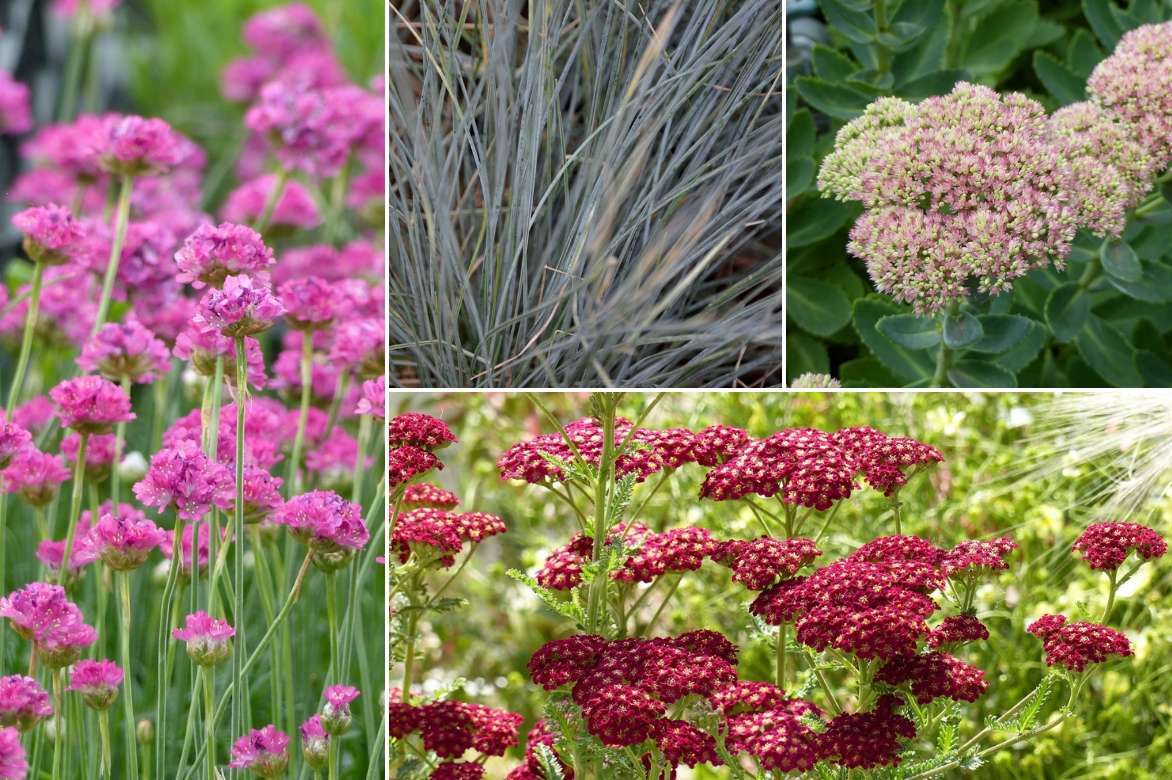
Example of combination in dry soil: Armeria maritima, Festuca glauca, Sedum spectabile ‘Herbstfreude’, Achillea millefolium ‘Red Velvet’
It finds its place festooning a summer bed alongside dwarf carnations, perennial flax, Phacelia, Nigella damascena, Penstemon, Cosmos, Gaura, Eryngium, Nepeta and ornamental alliums.
It adds relief to pink/mauve-inspired themes when surrounded by lavenders, asters and dwarf carnations, creeping gypsophila, roses with low habit, artemisias and small blue thistles.
In a stone trough or a pot, pair it with alyssum.
→ Discover other ideas for combining Armeria in Virginie’s advice sheet
Useful resources
- What to plant in a dry garden?
- Find the perennial groundcover that flowers all summer!
- Gazon d’Espagne is essential in low-maintenance gardens, which other plants to pair with it?
- Discover our lawn alternatives and our advice on choosing them
- Subscribe!
- Contents
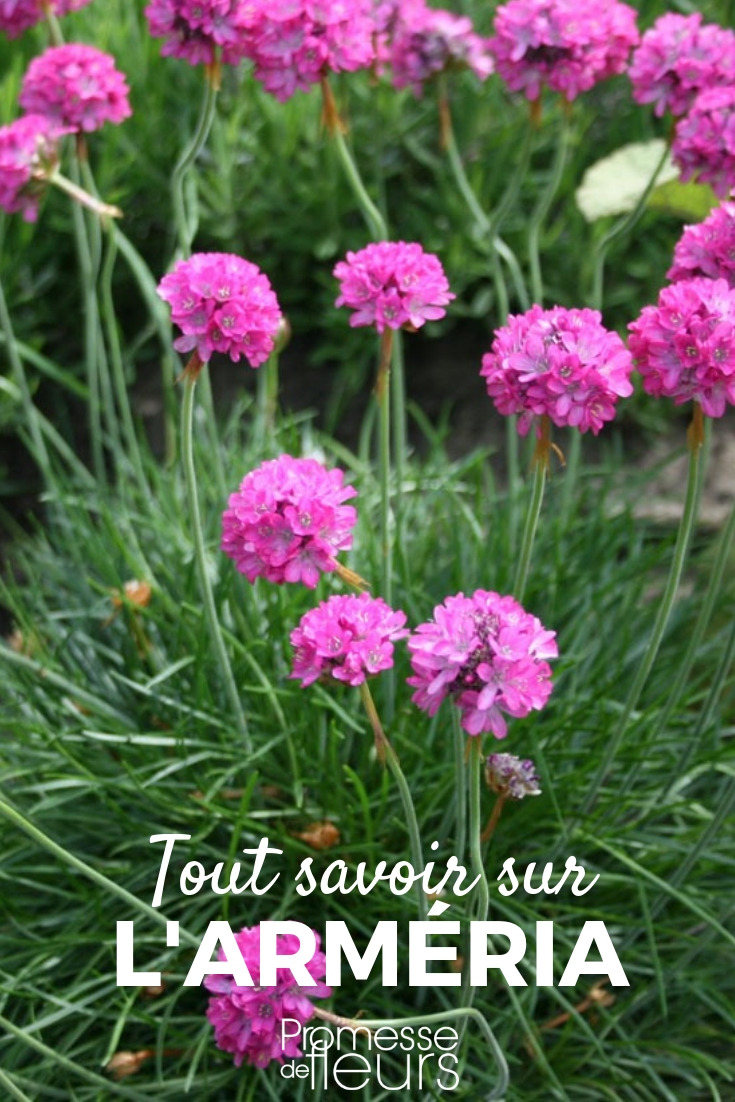
































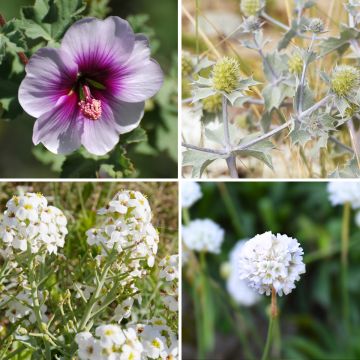


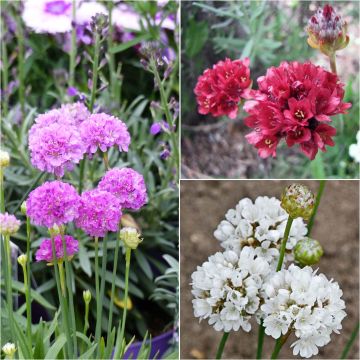



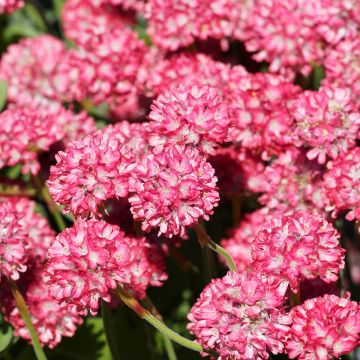


Comments